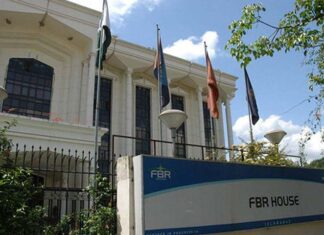Pakistan’s poverty rate is expected to remain high at 42.4% in fiscal year 2025, with 1.9 million more people falling into poverty as the population grows at nearly 2% annually. This marks little improvement from last year, despite efforts to stabilise the economy and reduce inflation.
The World Bank’s latest “Poverty & Equity Brief” report highlights that while Pakistan’s economy grew by 2.6% in fiscal year 2024, this growth was insufficient to reduce poverty.
The country’s poverty rate, defined at $3.65 per day (2017 PPP), continues to impact millions, with consumption-based inequality rising by nearly two points since fiscal year 2021. This increase is partly due to underrepresentation of wealthier households in surveys.
External factors, particularly shifting global trade dynamics, are also expected to influence Pakistan’s economic recovery. Agriculture, a key sector for the country’s poor, has faced significant setbacks in the first half of fiscal year 2025. A 40% reduction in rainfall, pest attacks, and shifting crop production choices have led to projected declines in crop yields, notably a 29.6% drop in cotton production and a 1.2% fall in rice yields.
This limits agricultural sector growth to less than 2%, impacting rural poverty, which is expected to rise slightly by 0.2 percentage points. Agricultural workers’ real incomes are also expected to fall by 0.7% in FY25.
Food insecurity is a growing concern, with an estimated 10 million people at risk in rural areas. Fiscal tightening has further hampered development spending, particularly affecting the construction industry, which employs 17% of the country’s poor in daily wage jobs.
Both the industrial and service sectors showed weak growth in H1 FY25, with minimal real income increases for low-wage workers in construction and low-productivity service jobs.
Rising emigration, particularly among low-skilled workers, could help extend remittance benefits to poorer households. On the social protection front, recent increases in the Benazir Income Support Program benefits, above inflation rates, and plans to expand the program to 500,000 additional households by the end of the fiscal year, are expected to provide some relief and help mitigate short-term market shocks for the poor.
While nominal wages for low-skilled workers have nearly doubled since fiscal year 2019, real wages have remained stagnant or declined, reflecting diminished purchasing power despite a slight decrease in inflation to 7% year-on-year in H1 FY25.
Remittances from abroad have surged by 33% in H1 FY25, but their impact on the poorest households remains limited, as only 3.2% of the lowest-income households receive remittances. However, for vulnerable households just above the poverty line, remittances have become crucial in preventing further descent into poverty, especially in the face of economic shocks.























